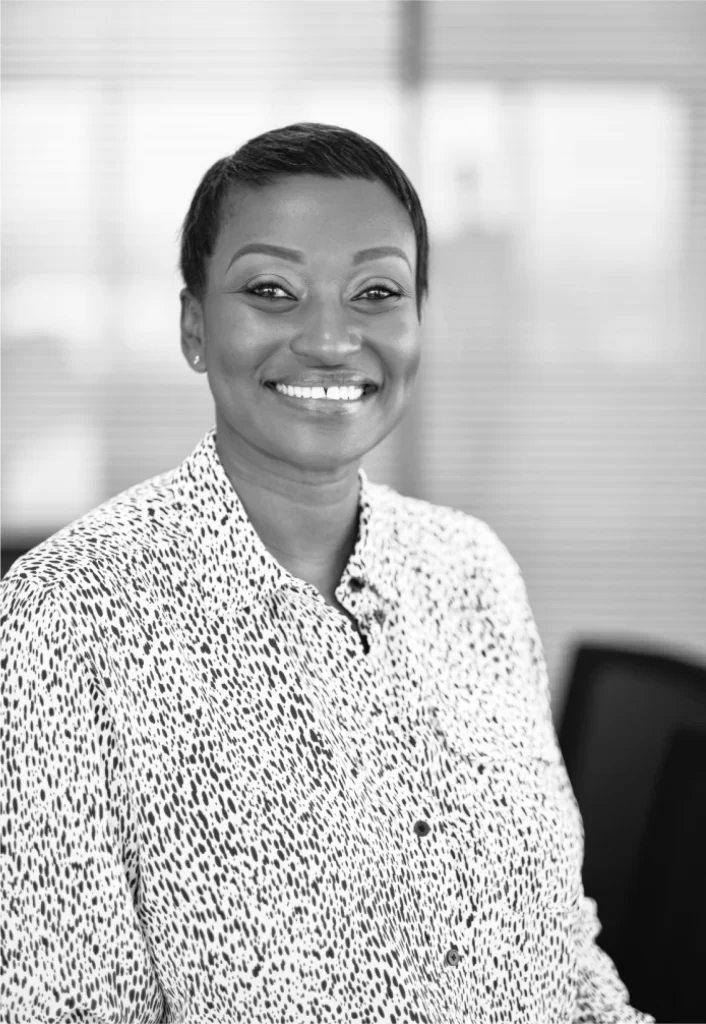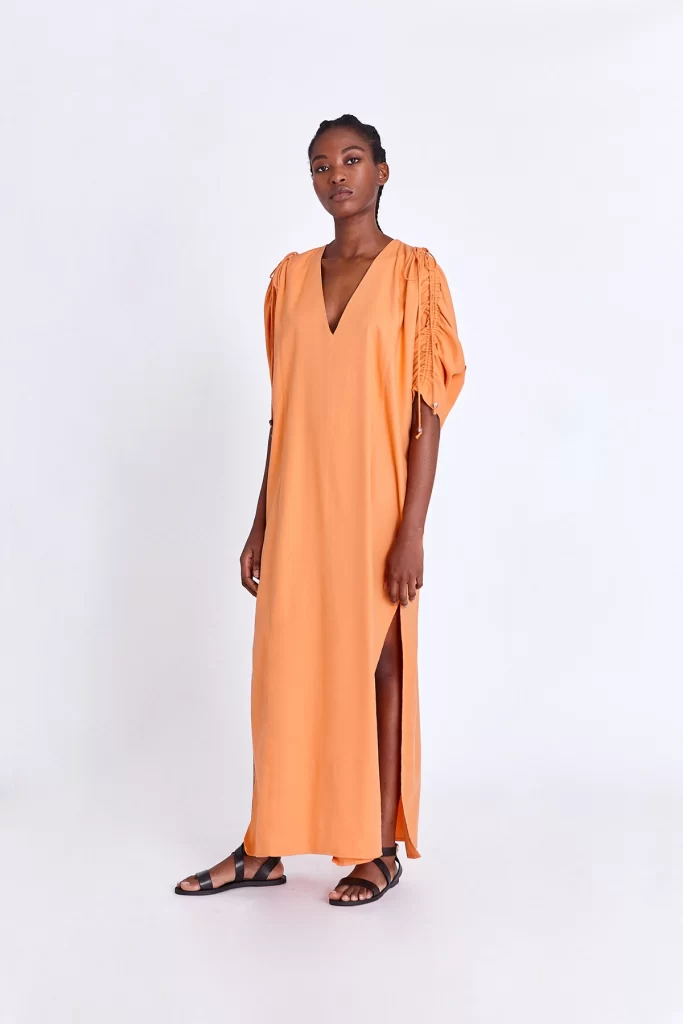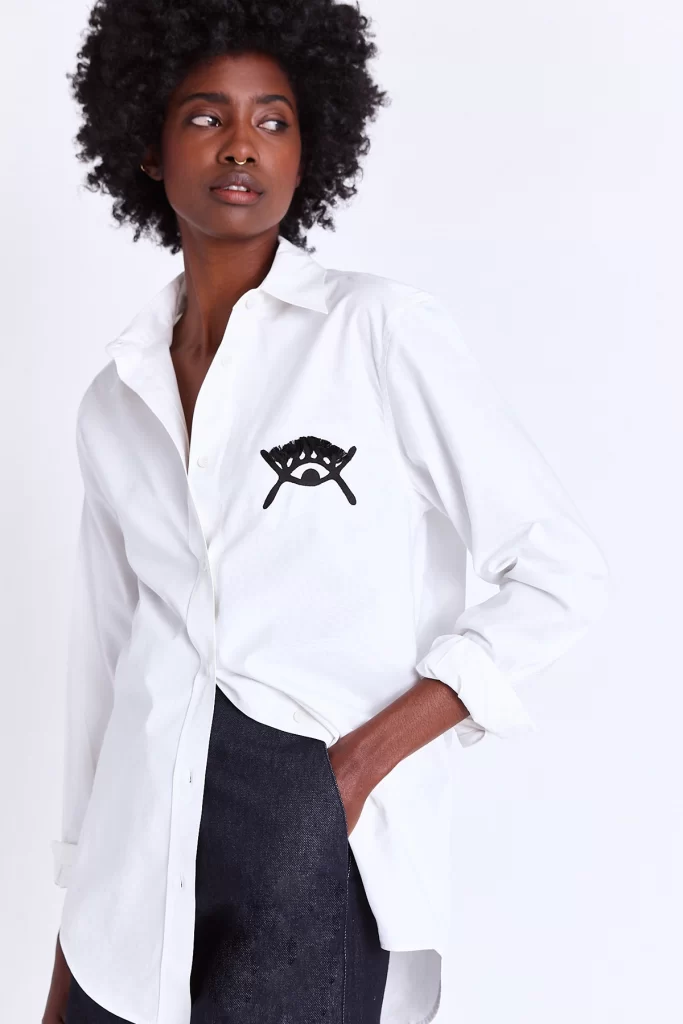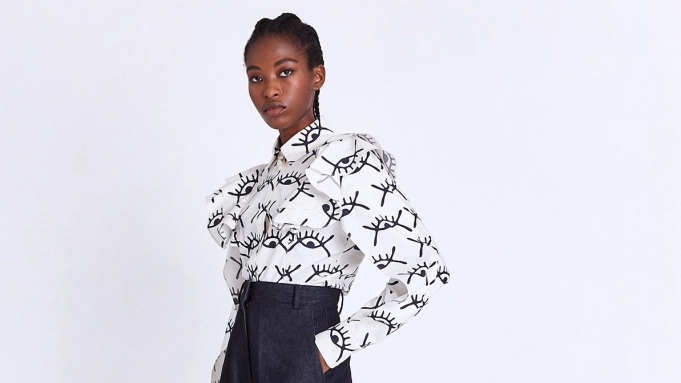Rwandan-born textile entrepreneur Maryse Mbonyumutwa is positioning the label in the affordable luxury segment, with an eye on a global consumer.
PARIS — Could Asantii become the first African fashion label to compete with the likes of Sandro, A.P.C. and Ba&sh? Rwandan-born entrepreneur Maryse Mbonyumutwa believes the world is ready for what she bills as the first African global brand, as she prepares to launch the contemporary label, designed and produced in Africa, that she hope will serve as an incubator for the local fashion industry.
The chief executive officer of Pink Mango, a multinational group with 23 years of experience in garment manufacturing and the production of promotional items, Mbonyumutwa has worked extensively with factories in Asia but was frustrated that the apparel industry wasn’t creating more jobs on the African continent.
Likewise, she was puzzled that such a huge territory had yet to produce a brand for a worldwide audience. “I’ve worked for so many brands from so many different countries — France, U.K., Germany, Americans, even the Japanese have Uniqlo — but I’ve never had in hand a technical pack for an African global brand,” she told WWD.
“It’s a continent of 1.2 billion people who don’t run around naked in Africa, so who dresses them? I thought there was a little bit of imbalance,” she said.
The executive, who fled the Rwandan genocide at 20 and now holds dual Belgian citizenship, is bringing her international expertise to the venture, and in 2019 teamed up with her historic Chinese partner to set up a factory in Rwanda that has created 4,300 jobs so far.
The facility produces outerwear for firms including G-III Apparel Group; Spanish retailer Tendam; France’s Damartex Group; and supermarket chains such as Tesco, Lidl and Aldi. It will serve as the springboard for the launch of Asantii, a womenswear brand that celebrates African heritage and craftsmanship.
“We definitely are not a fast-fashion brand,” Mbonyumutwa said. “We are a sustainable and ethical brand, and our positioning is more in what they call affordable luxury. But in terms of pricing, we are cheaper because we want the brand also to be affordable on the continent.”

The first collection celebrates Rwanda’s natural landscape with a palette of apricot, indigo, and forest green. Graphic prints and embroideries reference an Adinkra symbol from Ghana representing the “all seeing eye,” as well as the Ashanti fertility doll. Materials include traditional Faso Dan Fani cotton fabric from Burkina Faso.
The label’s website opened for pre-orders on Thursday and will launch officially on Aug. 3, alongside a pop-up store in Ham Yard Village in London’s Soho district. A second temporary space will open on Aug. 15 in Kigali at interior design store Ysaro, to be followed by a boutique in Johannesburg in September.
The Asantii collection, named after the Swahili word for “thank you,” is the product of a group of 15 designers from Angola, the Democratic Republic of Congo, Ethiopia, Ghana, Ivory Coast, Kenya, Morocco, Nigeria, Rwanda, Senegal, South Africa, and Tanzania.
That geographic diversity reflects the vast amount of talent waiting to be tapped on the continent. Luxury brands have woken up to this potential, with AZ Factory choosing South Africa’s Thebe Magugu as its first guest designer, and the Karl Lagerfeld brand teaming up with Nigerian designer Kenneth Ize on a capsule collection.
Investors are also sensing the opportunity. Birimian, an investment company focused on African fashion designers, said in April it was scaling up its platform by partnering with Paris-based private equity firm Trail Capital to launch a long-term investment company aimed at fostering the continent’s first generation of global luxury brands.
“Originally, what I was thinking of is to invest in one African brand, and then see how we can produce for it and see if we can scale and globalize it. But I’ve been in contact with quite a lot of brands in Africa, and I would say the majority have a problem: they all have amazing creativity, but then the problem really comes in terms of execution,” Mbonyumutwa said.
“The quality is not good, there is no standardization, and they don’t have access to production infrastructure, so it’s very difficult to scale when you’re in those conditions,” the executive said.
“So the dilemma was, what do I do? I really want to support African fashion, but I do not want to support mediocrity, because when you buy something, you’re going to wear it once, but you’re not going to become a returning customer,” she continued. “It was like, let’s set up our own brand, and go through what they go through, and then we’ll be able to actually identify what we are missing on the continent to have a few brands emerging.”
To begin with, Pink Mango did an assessment for each of the 14 labels on its roster.
They are Soraya da Piedade; Uchawi by Laëtitia Kandolo; Richie Maya; Yefikir Design by Fikirte Addis; Chloe Asaam; Pelebe by Zak Koné; KikoRomeo by Iona McCreath; Amal Belcaid; Emmy Kasbit by Emmanuel Okoro; Toni Grace; Sisters of Afrika by Hélène Daba; Erre by Natasha Jaume and Carina Louw; Ekantik by Anjali Borkhataria, and Martin Kadinda.

Many of them have won awards and have strong local followings, but tend to produce their clothing artisanally in traditional workshops, lacking the know-how to deal with garment factories, Mbonyumutwa said.
“There’s quite a large group that actually lacks just the basic fashion education, so we are hoping to partner with fashion schools internationally,” she said.
“Between the creativity of the designer, what he’s drawn on paper, and the garments you’re wearing, there’s so many other professions which are just not available on the continent,” she remarked, adding that many designers among her group were not aware of the various technical professions that exist in the industry.
Asantii is helping the designers with a production infrastructure and the support of a team in London drawn from the luxury industry. “While they co-create for Asantii, they are learning the skills, and we will be opening the whole Asantii infrastructure to the brands when they’re ready,” said Mbonyumutwa.
“My dream is to develop the 14 brands to the level they want because not everybody wants to scale. Some of them want to remain smaller brands, but they still do need the support for execution and product quality,” she added.
The London team is headed by Vanessa Anglin, formerly vice president of product development at Burberry, while the design studio is overseen by Anna Schmidt Risak, who has designed for brands like Burberry, Bally, and Alberta Ferretti.
Asantii plans to develop two seasonless collections per year. By the end of next year, the company plans to introduce the work of four designers under their own label to be sold alongside its brand online. As of next year, the headquarters of the label will officially move to Kigali.
“Today, we are exporting 85 percent of our production, so I’m really hoping that in 10 years when you work in our set of factories, we’re producing 50 percent for Western brands, but 50 percent for African brands,” Mbonyumutwa said.
“Once we have mastered the project in Rwanda, the goal is to replicate the Asantii infrastructure — product development and production — in other countries,” added the executive, who hopes to open units in West Africa, East Africa, and southern Africa.

| SOURCE : wwd.com |

